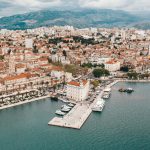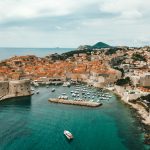September 14, 2019 – Croatian tourism chiefs are claiming another successful season, and using a rather interesting statistic to illustrate their point.
It has been a summer of statistics…
My favourite so far was Rita Ora’s claim to have had a blast in front of 60,000 fans in a stadium which holds just 9,000, a concert which the Zadar Tourist Board hailed a big success:
This is definitely the direction in which we continue to develop in tourism.
The people of Zadar, left to foot a bill of almost 100,000 euro (on top of the 60,000 euro paid by Zadar Tourist Board) for a concert which was a totally disorganised flop attracting just 6,000 fans (including at least 900 free tickets for media etc), might disagree.
But with the tourist board declaring the event a success, and the global star bigging up the numbers to improbable levels, history will record another majorly successful event in Croatian tourism.
And so to the wider picture of Croatian tourism statistics. After all the doom and gloom of the Croatian media (and TCN) about a terrible season, the Croatian National Tourist Board announced a 5% increase in arrivals and 2% increase in overnight stays from January to August. Having travelled the length of the Dalmatian coast with zero waiting times at borders, tolls or ferries for the first two weeks of July, and having documented an empty Jelsa night after night after night, the announcement was indeed a surprise. Several friends in Zadar messaged me to say how shocked they were about the 10% increase in Zadar, having observed a much emptier destination than usual this year. But, as one quipped, “If Rita Ora can squeeze 60,000 into a Zadar stadium built for 9,000, anything is possible.”
But it was another statistic claim by Croatian National Tourist Board director Kristjan Stanicic that caught my eye, a classic example of telling a small part of the story to suit the current narrative.
Stanicic stated – quite correctly – that Croatia had risen 5 places since 2017 in the Travel & Tourism Competitive Index to 27th in the world, which sounds like a great achievement.
Except it isn’t. And not only that, Croatia’s 2019 rank on the global index rates as a total failure of the key development goal of the Croatian Tourism Ministry’s 2013 – 2020 plan. As I wrote recently, the same strategic plan 6 years ago which envisaged 30 golf courses by next year (none started yet), progress in developing medical tourism (no taskforce committee yet 6 years into the 7-year plan) – the list goes on.
The overriding goal was to get in the world’s top 20 by 2020. As the index only comes out every two years, Croatia will end at number 27, hardly a stunning success. In fact, a little like the 7-year plan overall, a rather large failure.
But Director Stanicic’s assertion got me thinking. If Croatia had only risen to 27 in those 6 years of dedication to the cause (from 35 – by comparison, Greece, which did not have the same stated goal and whose country fell apart halfway through, rose from 32 to 25), who was above Croatia? Who was more competitive in tourism in the EU, for example?
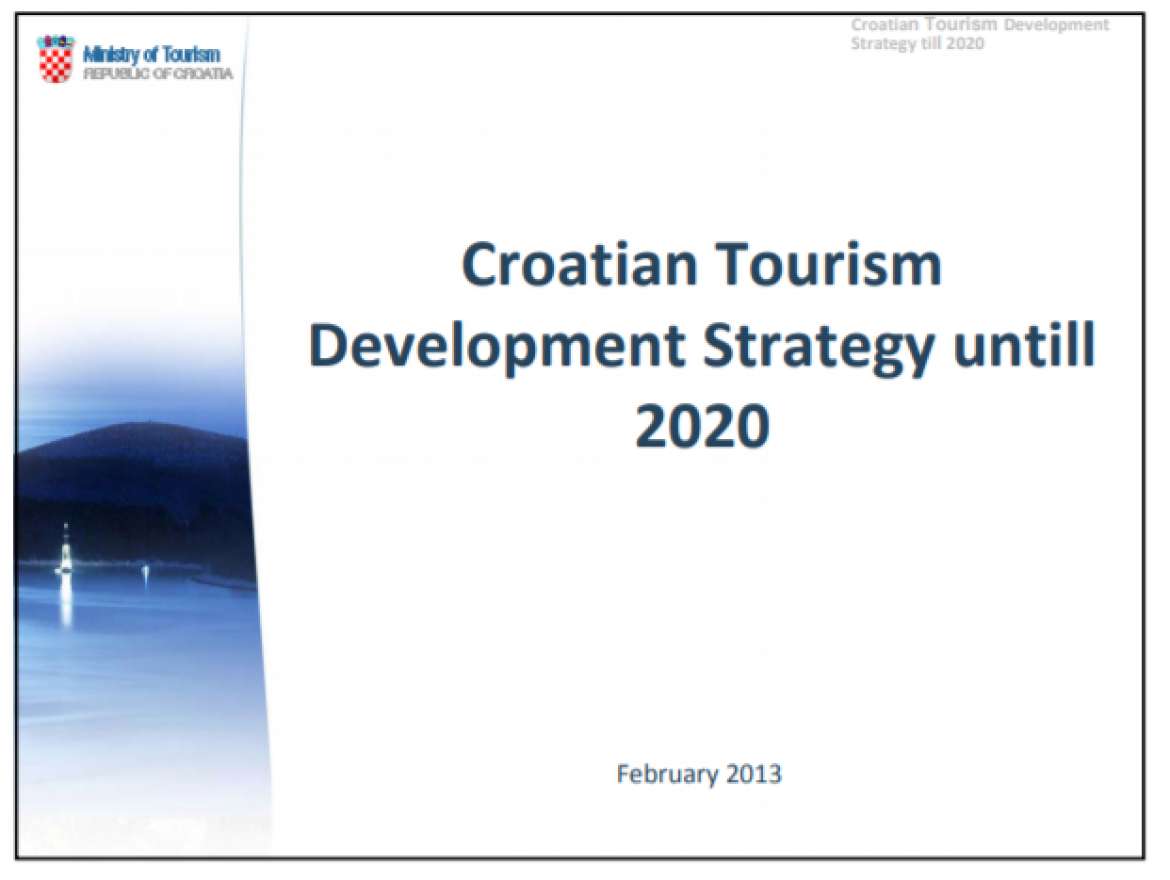
(perhaps the spelling on official documents has improved since 2013 to make Croatia more globally competitive in tourism)
As Croatia prepared to enter the EU in July 2013, the Croatian National Tourist Board ran a campaign called Croatia – the New Tourism Star of the EU, as you can see from the video above.
So how is it going, six years later, after six years of concerted effort by the Ministry of Tourism to deliver on its key development goal of establishing Croatia in the world’s top 20? Has Croatia truly become the new tourism star of the EU?
Er… not quite.
With over 20% of its GDP, mostly due to the sun and the sea, due to tourism, the new tourism star of the EU finds itself in 14th place currently, out of 28 EU countries.
The good news is that Croatia should jump to 13th position at the end of next month if Boris delivers on his do or die promise to take the UK out of the European Union.
It is behind its main regional competitor, Greece, the mighty tourism powerhouse of Luxembourg, as well as Belgium, but has managed to get ahead of Finland.
Innoguide Experiential BE from Copper Views on Vimeo.
Ah, the mention of Belgian tourism, not something I get to write about often. But perhaps part of Belgium’s success is due to the fact that it provides authentic and innovative content, often out of nothing. I will be forever grateful to Iva Silla of Secret Zagreb for presenting this great video at a conference in Zagreb a few years ago – how a Belgian town took advantage of its pig tradition and nickname to turn it into a tourism attraction. Check out the innovative (and popular!) pig walking tours of Belgium above.
I should point out to be clear that this measure of success is not something I am choosing to fit my narrative, rather one that the Ministry asked to be judged on, and one which the Croatian National Tourist Board is claiming as a big success.
To miss the number one stated goal for tourism development by such a wide mark, and to boast of such success when you are 14th out of 28 of a community where tourism is not the most important industry in most of the other member countries, is a little bit odd. At least to this Brit, but then what would I know?
This obsession with numbers – record arrivals, record overnight stays – makes little sense to me or many others I discuss tourism with, but if we have to deal with the currency of numbers, let me ask this.
What is the target number of arrivals?
What is the target number of overnight stays?
Let me explain what I mean. If I have a hotel of 100 beds and I am 60% full in my first year, then 66% in my second year, I have a 10% increase. A 72.6% occupancy in year 3 is another 10% growth. I can’t continue to grow indefinitely, and my final goal would be to be 100% full.
Assuming – and I am not convinced of it – that the ministry has a strategy, what is the final goal? How many arrivals are we aiming for? 20 million? 30 million? 4 billion? Does anyone know? And how are these targets spread by month? If we know what we are aiming for, it would be a lot easier to understand.
Similarly, what is the target number of overnights, and how does that break down by months? Does anyone know? If yes, in the public interest, can we have this in the public domain?
Presumably, if there is a strategy, we also have a target number of hotel beds and private accommodation beds? Can we publish these as well, so that we all know what the plan is and what we are aiming for?
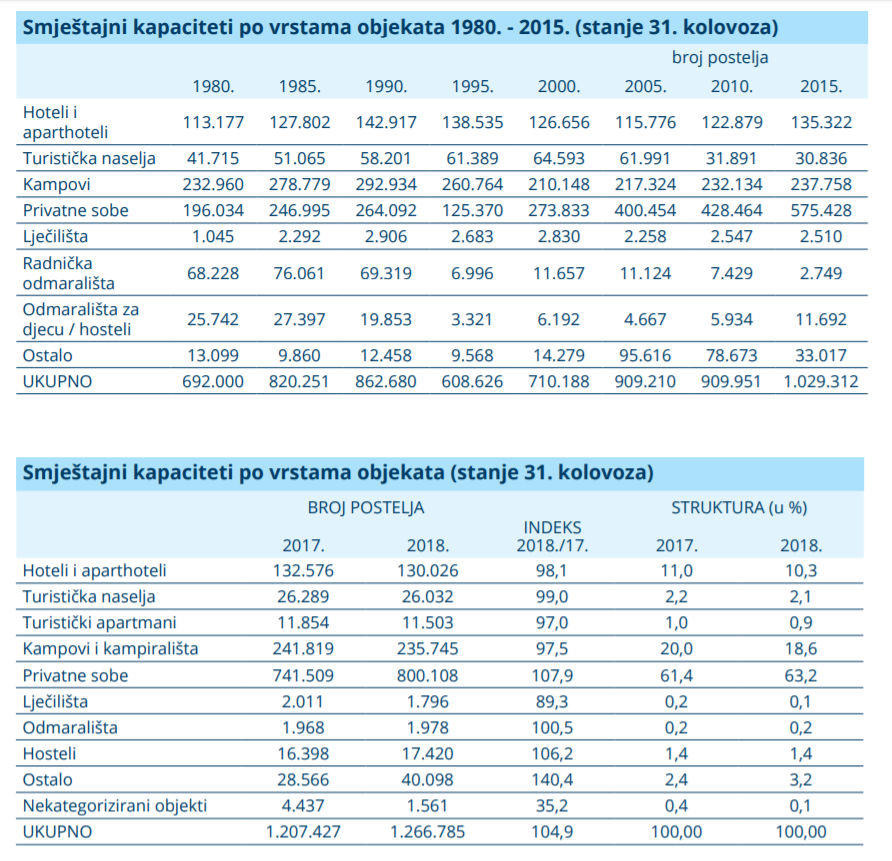
According to those beloved official statistics (these provided by the Croatian National Tourist Board, above), Croatia had 11 million more tourists in 2018 than in 1990. It also had 54 million MORE overnights, despite having 9% LESS hotel beds. And private accommodation beds rose from 267,000 to 800,000 in the same period.
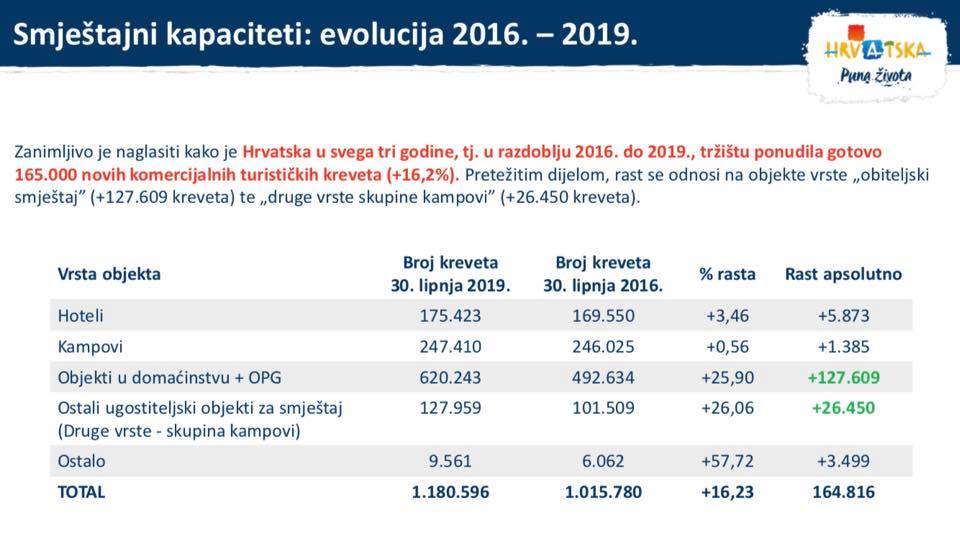
However, if you rely on the official statistics I got from the Ministry of Tourism (the chart above), Croatia has only 620,000 private beds, some 180,000 fewer than the Croatian National Tourist Board is claiming. Both are official statistics – good to know we are basing our entire success on statistics and we can’t even officially decide which numbers we are working with…
At the beginning of the summer, the addition of 127,000 extra private beds in the last three years was being trumpeted as some kind of official tourism success, but by the end of it, it was explained to us that the focus now is to reduce the number with only the quality ones surviving.
If there truly is a strategy, can we a) agree between the ministry and the tourist board what the real numbers are (we currently have a 22.5% discrepancy in number of private beds, for example) and then explain to us mere mortals what the strategy and target numbers are.
And finally – and this is a really big one – we need a LOT more transparency on the issue of infrastructure. 19.5 million tourists in 2018 versus 8.5 million in 1990 is a huge increase, and I doubt many would claim that investment into the infrastructure has kept pace with that. Indeed, increasing reports of sewage in the sea would seem to point this out in an alarming fashion. How is infrastructure keeping pace with tourism growth, and what strategies exist for this?
Croatian tourism CAN continue to grow, but not in the current format. The reliance on seasonality has to end, as does the obsession with numbers. And the threat of devastation to the coast and Adriatic has to be reduced. As mentioned before, rather than just criticising, here are 5 concrete ways that Croatia should develop its tourism with less pressure on numbers and the environment.
As for the statistics, I doubt I am the only one who is as confused as ever.





